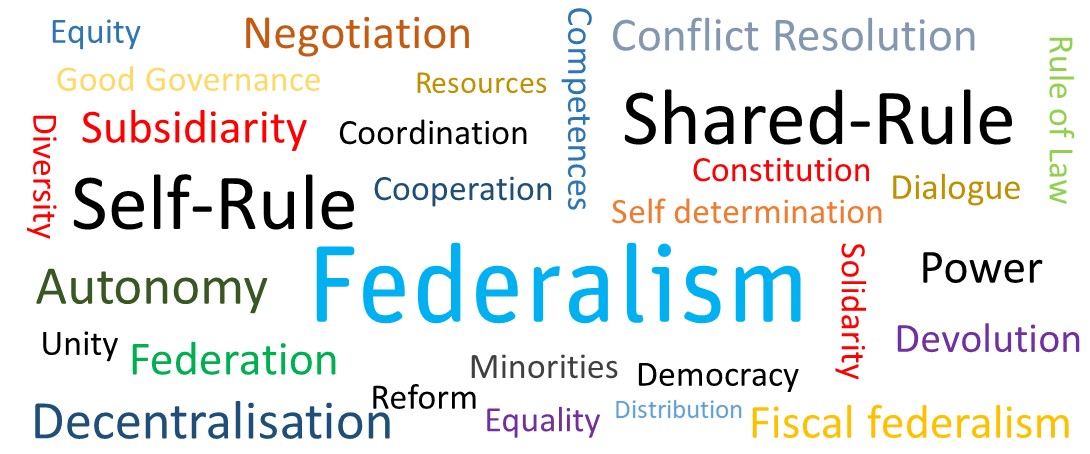Abstract
The research on consociationalism and conflict needs to take into account the interplay between consociational institutions such as self-rule, power sharing, parliamentarism, and proportional representation. We present a configurational risk analysis of 556 subnational cases in 21 fractionalized post-war anocracies, which aims at identifying in which consociational configurations self-rule is associated with a reduction or rather increase of violent conflict risk. In our analysis, the full consociational package is indeed associated with a conflict risk reduction. However, consociationalism is not the only game in town, with majoritarianism being on par when it comes to peace promotion. In contrast, mixing institutions from both “worlds” is actually associated with an increase of conflict risk. Divided societies are therefore well advised to adopt consistent approaches of institutional engineering.
“Consociationalism is a package, not a menu, and trying to isolate the impact of its individual features comes at the risk of underestimating its joint effects.”
(Bogaards, Helms, and Lijphart 2019)
Consociationalism is a Package, not a Menu
Consociational institutions are widely believed to promote peace in deeply divided societies. The empowerment of subnational regions enjoys particular support among policy makers. However, the robustness of the link between territorial self-rule and intrastate peace is smaller than is generally assumed. This results from a prevailing shortcoming: ignoring the interplay of self-rule with other elements of consociationalism.
Most authors dealing with self-rule draw on Lijphart’s consociational “formula”, consisting of a grand coalition and veto rights, segmental autonomy as well as proportionality (Lijphart 1969). It is therefore surprising that authors tend to make overly simplistic assumptions about the effects of self-rule on intrastate conflict by selecting specific institutions from the consociational package. Such studies analyze, for instance, whether states with self-rule perform better than those without (Bermeo 2002; Erk and Anderson 2009).
However, trying to isolate the effects of individual institutions contradicts the central tenet of the consociational school, which argues that self-rule, power sharing, parliamentarism, and proportional representation work together to produce a positive effect on peace in divided societies. Consociationalism is a type of political system, with a characteristic composition and interplay of institutions. A reliable assessment of the peace-promoting potential of self-rule therefore requires to analyze its role in different institutional configurations within the consociational package.
Approach and Data
We propose a new empirical approach: a configurational risk analysis. This takes the form of an evaluation of binary classifiers. We conceptualize “risk” as the coincident effect on the incidence of intrastate conflict produced by specific configurations of the elements of the consociational formula: self-rule, power sharing, proportional representation, and parliamentarism. For this purpose, we use a measure known as the absolute risk increase (ARI), which expresses the risk that the outcome and the condition co-occur. ARI is measured by subtracting the False Omission Rate (FOR) from the Positive Predictive Value (PPV). The FOR is the proportion of false negatives of all predicted negatives. Conversely, the PPV reflects the probability that a predicted positive is a true positive. This leads to the following formula:

If the condition is itself a configuration, we evaluate the risk associated with this configuration compared to all its counterparts together.
For the analysis we selected countries for which consociational solutions are intended: ethnically fragmented populations, democratic but not consolidated regimes, and post-war societies. In a first step, we selected all country-years between 2000 to 2018 with a V-DEM liberal democracy score of higher than 0.25 and lower than 0.75 (Coppedge et al. 2020) and with a fractionalization score of 0.30 or higher (Fearon 2003). In a second step, we identified those countries which were affected by at least 25 battle-related deaths over the period from 1995 to 1999 according to the Uppsala Conflict Data Program’s (UCDP) Georeferenced Event Dataset (GED) (Pettersson and Öberg 2020). We aggregated the 7,185 region-years according to their consociational configurations: A new case was formed in a region when there was change in at least one of the consociational institutions. This procedure resulted in 556 configurational cases.
While the number of cases in our analysis is fairly high, we are dealing with just 21 countries. This leads to the problem that the generalizability of our findings might be reduced if a specific risk evaluation refers to a single country only. To account for both the number of subnational cases and the number of countries in our sample, we calculate the effective number of countries (ENC):

Where n is the number of countries with at least one subnational unit exposed to the configuration under analysis and p each country’s proportion of all units.
We measure the presence of self-rule by using the Territorial Self-Governance (TERRGO) dataset (Trinn and Schulte 2020). In order to measure power sharing, we follow Strøm, et al.’s (2017) conceptualization of “inclusive power sharing”, which covers grand coalitions and mutual veto rights at the national level. We conceptualize proportionality on the basis of two institutions: parliamentarism and a proportional electoral system, making use of Elgie’s list to distinguish between parliamentary and non-parliamentary systems (Elgie 2011) and the IDEA electoral database (IDEA 2021).
To take into account the fact that only rarely do intrastate violent conflicts uniformly affect entire countries, we spatially disaggregate the conflict data. Our outcome variable is a dichotomous measure of political violence derived from GED. As a first step, we annually aggregated the GED’s “best estimate” fatality counts for each subnational region in our sample. In a second step, we calculated the average for each of the configurational cases in the period under analysis. Cases with 25 fatalities or more are coded as 1 and 0 otherwise. The full dataset and information on the coding procedure can be downloaded here.
Results
The consociational school expects a low risk of violent intrastate conflict in settings where all of the following elements co-occur: a high degree of self-rule in subnational regions (SR) and, at the national level, a parliamentary system of governance (PARL), a proportional electoral system (PR), and executive power sharing (PS). Consequently, we should find that the configuration SR*PARL*PR*PS performs better compared to its 15 institutional counterparts that involve a low degree of SR, presidentialism, a non-PR electoral system and/or no sharing of executive powers at the national level. (The asterisk denotes the logical AND.)
Table 1 shows the ARI values for the consociational package and its counterparts. We omit those configurations with an ENC of 1.50 or lower and those without empirical cases in our sample. We make three observations:
- The full consociational formula (SR*PARL*PR*PS) is the only one among the configurations that contain self-rule which is associated with an absolute risk reduction (-12%). This is good news for the consociational school.
- However, the inverse configuration (sr*parl*pr*ps) fares actually not worse than the consociational formula, with a risk reduction by 13%. In other words, entirely majoritarian systems are as good as consistently consociational systems when it comes to the risk of violent conflict.
- Configurations that contain self-rule but not the other elements of consociationalism (SR*parl*pr*ps; SR*parl*PR*ps) perform worst, with a risk increase of 28% and 4%, respectively. Institutional cherry-picking thus seems to be a bad idea.

Conclusion
In our analysis we investigated whether self-rule reduces or increases the coincident risk of the incidence of intrastate violent conflict. Following the central idea of consociationalism, we argued that this question can only be answered by taking the interplay of institutions seriously. As isolating the effects of individual institutions misses the underlying assumption of the consociational school, a fruitful approach is a configurational risk analysis.

Figure 1 illustrates the results of this innovative methodological approach to study consociationalism in general and self-rule in particular. We show that consociationalism as a “package” is indeed associated with a conflict risk reduction. However, consistently majoritarian configurations are confirmed to be conducive to peace as well. Worst performing in our analysis are those configurations that combine self-rule with no or few other consociational institutions. Partial consociationalism actually increases the risk of intrastate violence and thus seems to be a bad idea.
Our sample consists of cases that are crucial for the consociational theory as our case selection concurrently focused on ethnically fragmented populations, anocratic regimes, and post-war societies. Despite this, endogeneity issues might remain. We cannot be certain whether self-rule leads to peace or conflict or whether arrangements of self-rule are more likely to be implemented in regions previously affected by conflict (or by its absence). This problem cannot be addressed by simply including time lagged variables in the analysis as we argue that the coincident risk is of interest in the study of institutional engineering, not longer-term “heritage” effects.
While consociationalism appears as conducive for peace in our account, it is not “the only game in town”, with majoritarian arrangements being on par. While this might have one believe that mixing institutions from both “worlds” is a good idea, this is clearly not the case. Rather, divided societies are well advised to adopt consistent approaches of institutional engineering.
Schulte, F. and Trinn, C. 2021. ‘Why we should stop cherry-picking in the analysis of consociational institutions’, 50 Shades of Federalism.
Bibliography
Bermeo, Nancy. 2002. “A New Look at Federalism: The Import of Institutions.” Journal of Democracy 13 (2): 96–110.
Bogaards, Matthijs, Ludger Helms, and Arend Lijphart. 2019. “The Importance of Consociationalism for Twenty-First Century Politics and Political Science.” Swiss Political Science Review 25 (4): 341–356. doi:10.1111/spsr.12384.
Coppedge, Michael, John Gerring, Staffan I Lindberg, Svend-Erik Skaaning, Jan Teorell, David Altman, and Michael Bernhard. 2020. “V-Dem Dataset V10 Varieties of Democracy (V-Dem) Project.” https://doi.org/10.23696/vdemds20.
Elgie, Robert. 2011. “List of Presidential, Parliamentary and Other Countries.” The Semi-Presidential One. http://www.semipresidentialism.com.
Erk, Jan, and Lawrence Anderson. 2009. “The Paradox of Federalism: Does Self-Rule Accommodate or Exacerbate Ethnic Divisions?” Edited by Jan Erk and Lawrence M Anderson. Regional and Federal Studies 19 (2). London: Routledge: 191–202. doi:10.1080/13597560902753388.
Fearon, James D. 2003. “Ethnic and Cultural Diversity by Country.” Journal of Economic Growth 8 (2): 195–222. doi:10.1023/A:1024419522867.
IDEA. 2021. “Electoral System Design Database.” International Institute for Democracy and Electoral Assistance. https://www.idea.int/.
Lijphart, Arend. 1969. “Consociational Democracy.” World Politics 21 (2): 207–225.
Pettersson, Therése, and Magnus Öberg. 2020. “Organized Violence, 1989–2019.” Journal of Peace Research 57 (4): 597–613. doi:10.1177/0022343320934986.
Strøm, Kaare W., Scott Gates, Benjamin A.T. Graham, and Håvard Strand. 2017. “Inclusion, Dispersion, and Constraint: Powersharing in the World’s States, 1975-2010.” British Journal of Political Science 47 (1): 165–185. doi:10.1017/S0007123415000174.
Trinn, Christoph, and Felix Schulte. 2020. “Untangling Territorial Self-Governance–New Typology and Data.” Regional and Federal Studies. Taylor & Francis, 1–25. doi:10.1080/13597566.2020.1795837.
Further Reading
Bogaards, Matthijs, Ludger Helms, and Arend Lijphart. 2019. “The Importance of Consociationalism for Twenty-First Century Politics and Political Science.” Swiss Political Science Review 25 (4): 341–356. doi:10.1111/spsr.12384.
Fontana, Giuditta, Markus B. Siewert, and Christalla Yakinthou. 2020. “Managing War-to-Peace Transitions after Intra-State Conflicts: Configurations of Successful Peace Processes.” Journal of Intervention and Statebuilding. Taylor & Francis, 1–23. doi:10.1080/17502977.2020.1770479.
Kelly, Brighid Brooks. 2019. Power-Sharing and Consociational Theory. Cham: Springer International Publishing. doi:10.1007/978-3-030-14191-2.
Neudorfer, Natascha S., Ulrike G. Theuerkauf, and Stefan Wolff. 2020. “Territorial Self-Governance and Proportional Representation: Reducing the Risk of Territory-Centred Intrastate Violence.” Territory, Politics, Governance, June. Taylor & Francis, 1–23. doi:10.1080/21622671.2020.1773920.
Trinn, Christoph, and Felix Schulte. 2020. “Untangling Territorial Self-Governance–New Typology and Data.” Regional and Federal Studies. Taylor & Francis, 1–25. doi:10.1080/13597566.2020.1795837.



